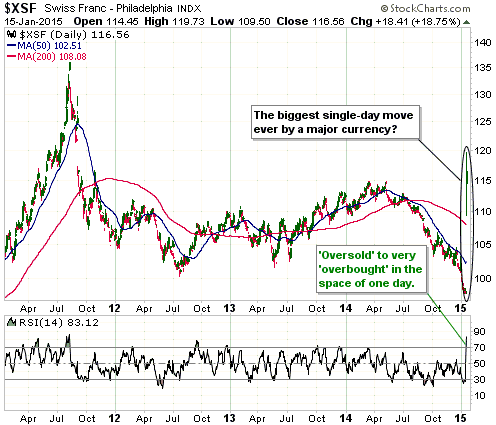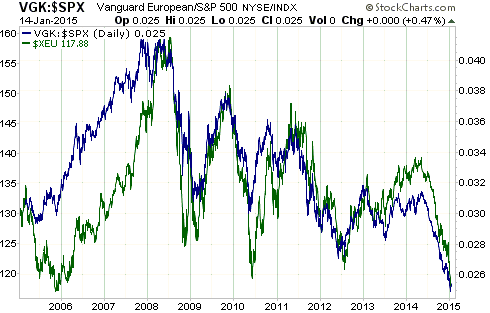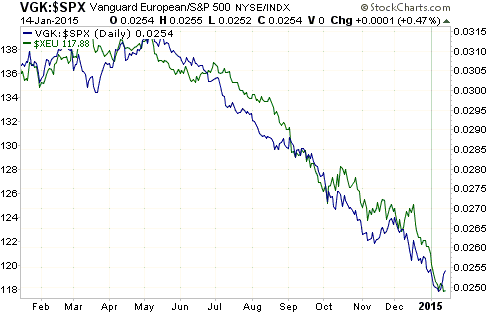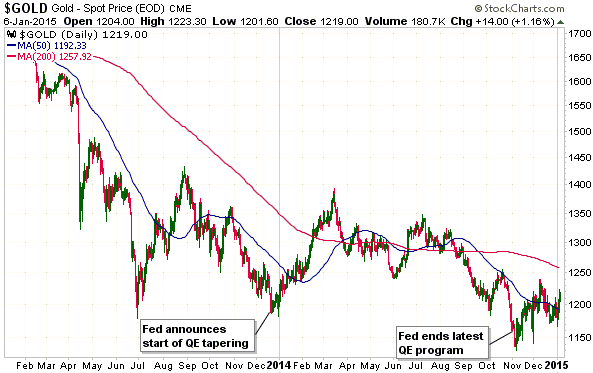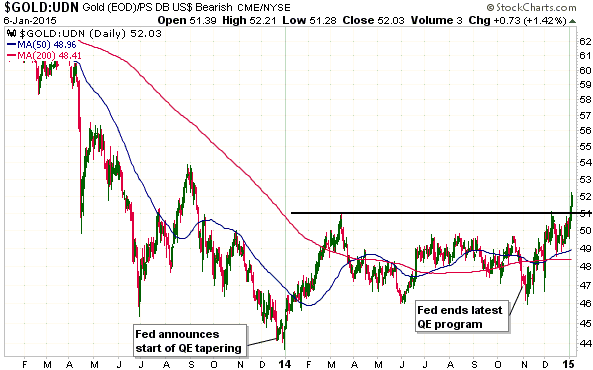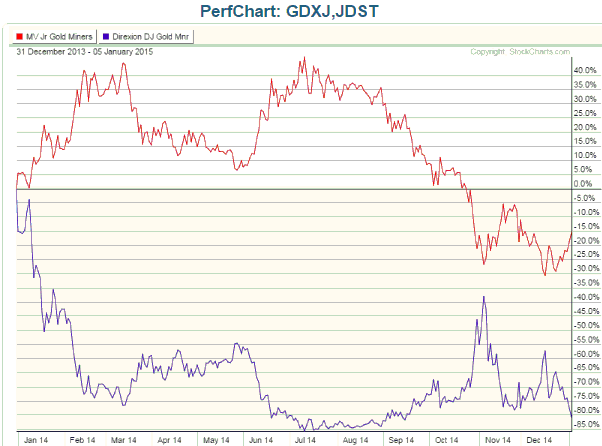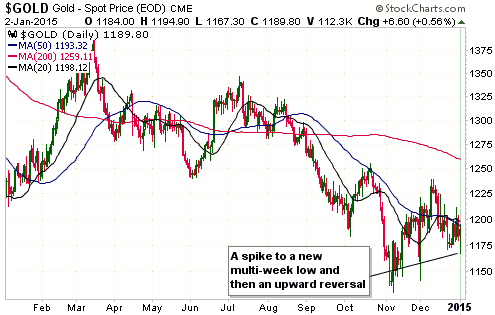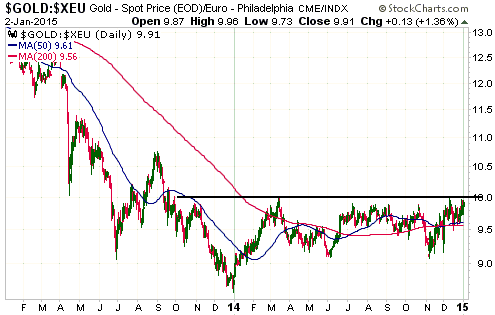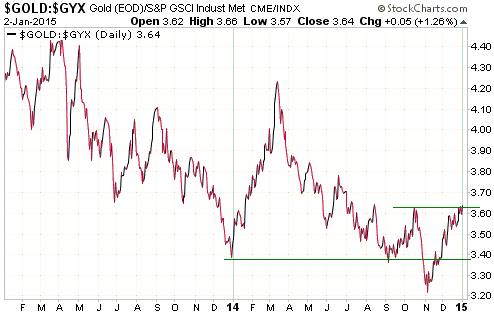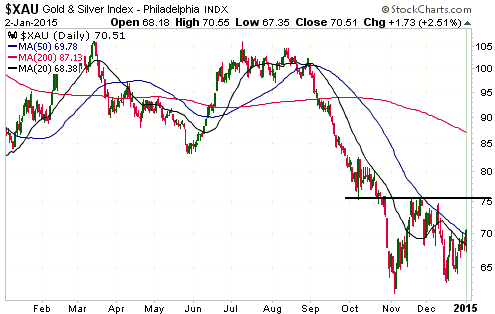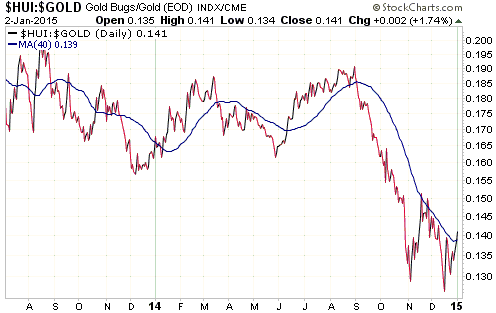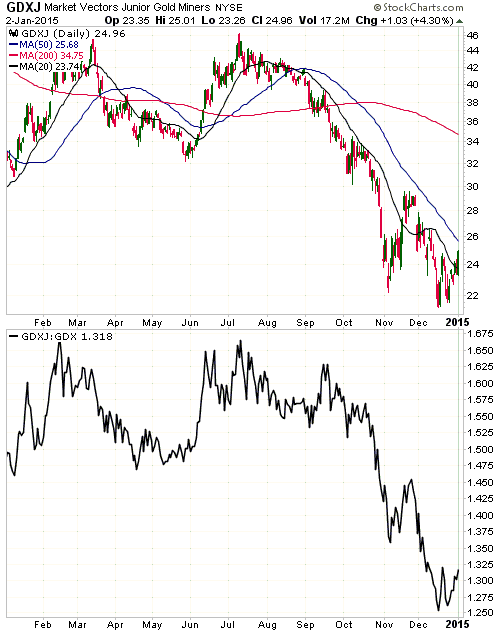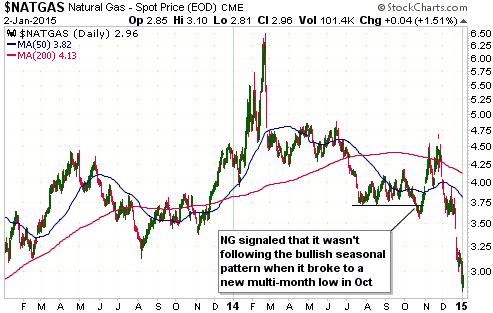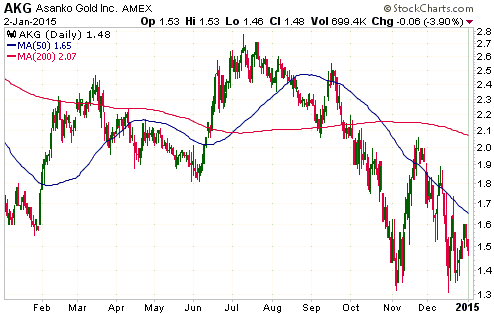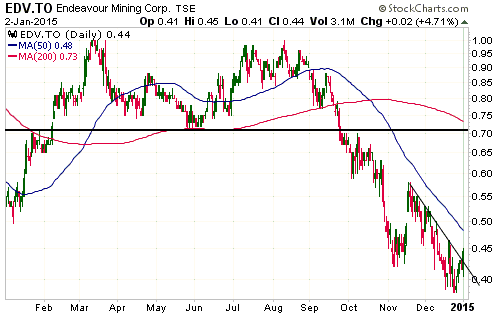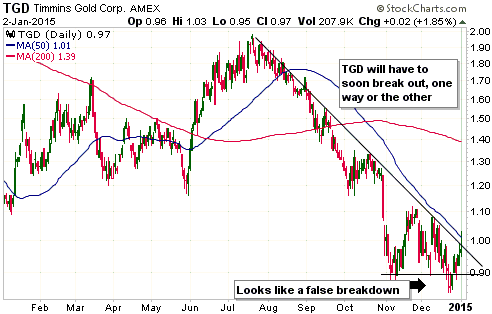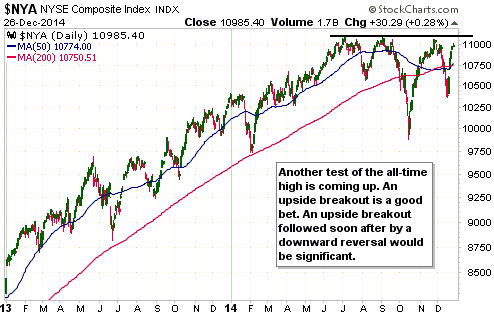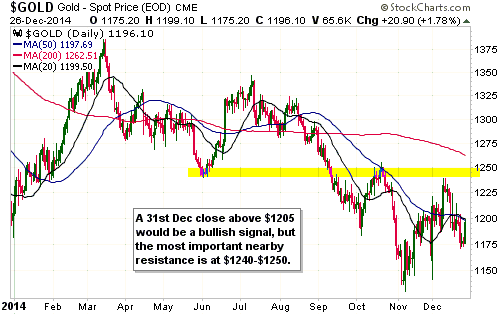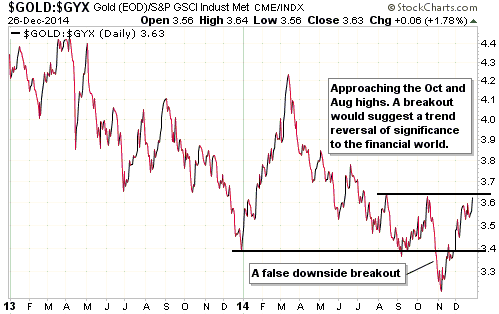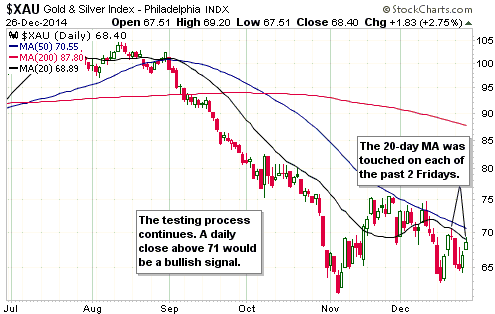In a shot out of the blue, on Thursday 15th January the Swiss National Bank (SNB) suddenly removed the Swiss-Franc/Euro cap that was put in place in August of 2011. Due to the cap that was imposed by the SNB way back then, the SF has effectively been pegged to the euro over the past three-and-a-bit years. Since the SF was a chronically stronger currency than the euro, maintaining this peg forced the SNB to massively expand its balance sheet by monetising huge quantities of euro-denominated bonds.
It seems that the SNB belatedly came to see that continuing to peg the SF to the euro created the risk that the SF would become excessively weak and unstable. The sensible, but surprising, decision was therefore made to eliminate the peg. A result was a gigantic single-day surge in the SF relative to all other currencies, not just the euro. For example, the following chart shows that the SF gained almost 20% relative to the US$ on Thursday. As far as we know, this is the biggest single-day move by a major currency in at least 50 years.
It should be noted, however, that the SNB’s shift to a more prudent monetary stance was only half-hearted, because at the same time as it announced the removal of the SF/euro cap it also announced that official 3-month interest rates would be set between NEGATIVE 0.25% and NEGATIVE 1.25%. In effect, the SNB is saying that it will pay speculators to short the SF.
 Print This Post
Print This Post

